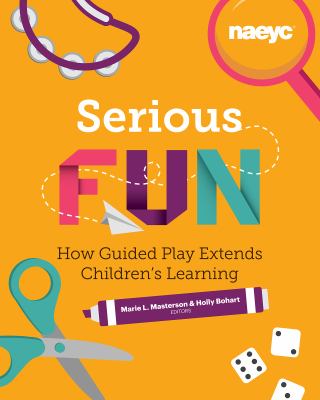
館長分享
Undoubtedly, children love playing. Is playing an obstacle of learning and only for fun? Otherwise, can learning and playing happen at the same time? What can children potentially gain from playing? This book may give readers some inspiration to the above questions. It suggests that intentional and meaningful guided play designed by adults can foster kids’ learning. This book shares valuable experience, findings and theories by educational experts to explain how teachers can set up effective guided play for young learners.
Through the book, the authors convey the idea that in guided playing, teachers actually have multiple guiding roles. For example, they could be participators in the activities, facilitators to constantly scaffold learning, storytellers and sometimes even mediators when there are disputes among children in play activities. More importantly, teachers are the ones who ask young learners thought-provoking questions during the play process. Carefully structured open-ended questions can guide children to observe in the play process, think deeply and express themselves clearly. Teachers’ questions can powerfully assist children to learn even when they are not even aware of.
The book demonstrates many examples of question types that teachers can easily use in their daily guided play with young students. With questioning and answering during guided play activities, there are many interaction opportunities between kids and teachers. Thus, not only students’ cognitive skills are developed, their linguistic and social skills are also strengthened. Also, the authors provide readers with many real-life examples of how some thoughtfully designed guided play activities can be both beneficial to and enjoyed by young learners.
Indeed, it may not be as challenging as some may imagine since it is not necessary to design very complicated and fancy games. It is not even required to use special tools or toys in the process. The book explains how teachers can think of ways to connect guided play with kids’ existing knowledge of the world, incorporate with the recent knowledge they acquire in lessons and further develop based on those. The book illustrates how guided play could help children to go beyond, build on and deepen teaching themes in ordinary lesson settings. We should also not neglect the fact that kids are enjoying themselves during the guided play time.
The book triggers the minds of teachers and caregivers that teaching and learning can take place anywhere, not just in the traditional classroom, paper and drilling environment. There are many other possibilities, including guided and interesting activities, games and storytelling. While teachers in Hong Kong may already have a very busy teaching schedule to cope with, it may still be worth spending time to include some guided play sessions in the curriculum. In fact, the book can also be a useful tool for parents to brainstorm ways to interact and educate children at home. A lot of the guided play advice covered in the book is very direct and achievable. Therefore, both teachers and caregivers can certainly give them a try.

